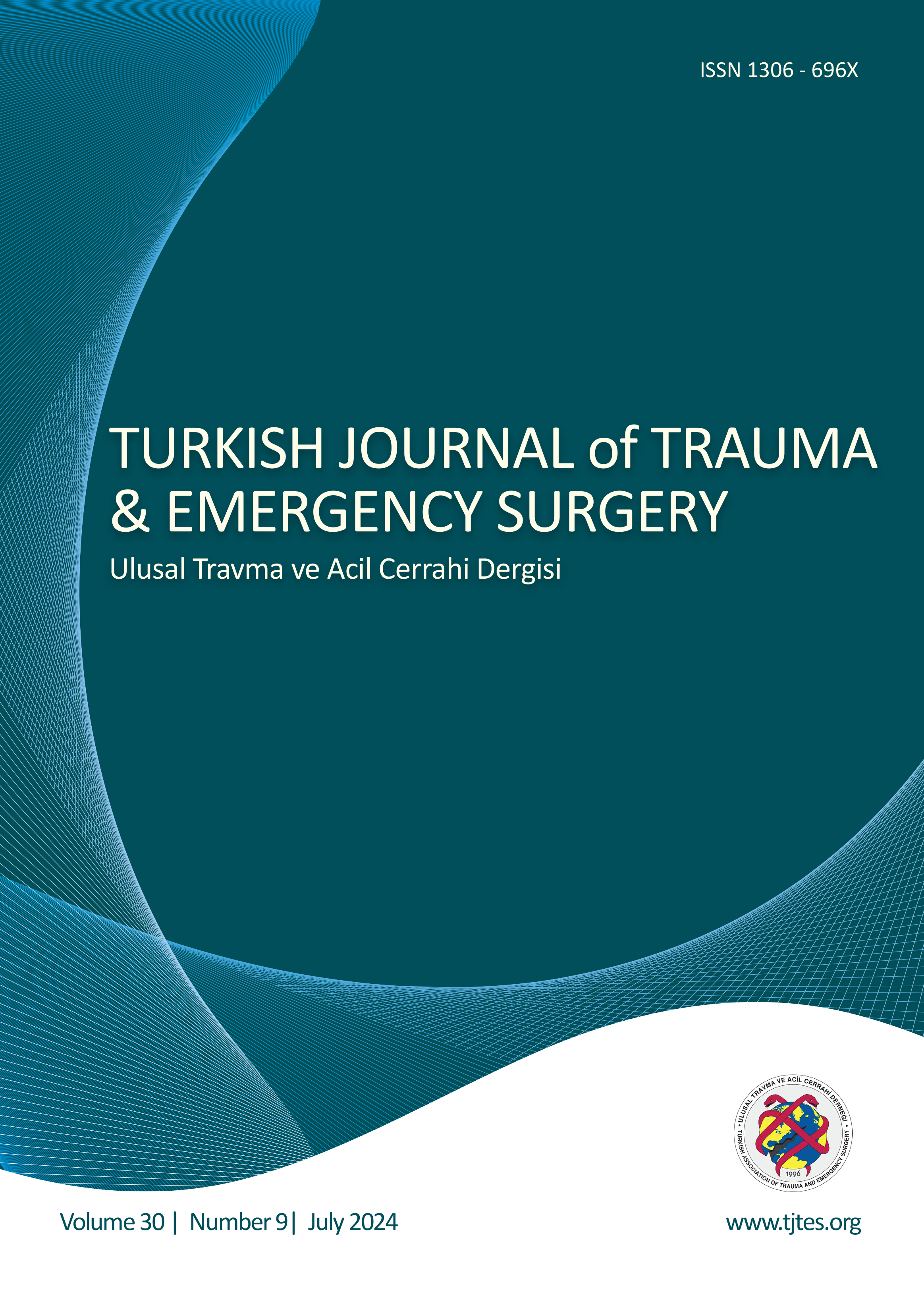Quick Search
Evaluation of the effects of ischemia-reperfusion injury in rat isogenic and allogeneic muscle and skin transplant models
Fatih Ceran1, Salih Onur Basat2, İdris Ersin2, Deniz Filinte3, Özgür Pilancı2, Mehmet Bozkurt21Department of Plastic, Reconstructive and Aesthetic Surgery, Biruni University Medical Faculty, İstanbul-Türkiye2Department of Plastic, Reconstructive and Aesthetic Surgery, Ministry of Health Bagcilar Training & Research Hospital, İstanbul-Türkiye
3Department of Pathology Marmara University Medical Faculty, İstanbul-Türkiye
BACKGROUND: Ischemia-reperfusion injury (IRI) is a phenomenon that affects transplant survival. The aim of our study was to examine the effects of IRI in isogenic and allogeneic muscle and skin transplantation models exposed to prolonged warm ischemia.
METHODS: Forty-eight Lewis rats and 16 Brown-Norway rats were used to create four groups: Isogenic Inguinal Flap Transplantation (IST), Isogenic Gastrocnemius Muscle Flap Transplantation (IMT), Allogeneic Inguinal Flap Transplantation (AST), and Allogeneic Gastrocnemius Muscle Flap Transplantation (AMT). Malonyldialdehyde (MDA) and superoxide dismutase (SOD) levels were measured on postoperative days 1, 7, 21, 35, 63, 100, and 120 in all groups. Donor-specific chimerism (DSC) in peripheral blood was evaluated in the allogeneic groups on postoperative days 7, 21, 35, 63, 100, and 120. The microRNA-21 and microRNA-205 levels were evaluated on postoperative days 1, 7, and 120 in all groups. At the end of the study, a histopathological examination was performed.
RESULTS: A statistically significant difference was found between the groups in terms of MDA and SOD levels. DSC was detected in the AMT group. A significant increase in microRNA-205 was observed, especially in the AMT group. There was no significant difference in the number of functional muscle units between the muscle transplantation groups.
CONCLUSION: The presence of DSC in the AMT group and the lack of a significant difference in the number of functional muscle units in the IMT and AMT groups are noteworthy findings.
Keywords: Allogeneic, flap; ischemia-reperfusion injury; isogenic; muscle; skin; transplantation.
Sıçan izojenik ve allojenik kas ve deri transplantasyon modellerinde iskemi-reperfüzyon hasarının etkilerinin değerlendirilmesi
Fatih Ceran1, Salih Onur Basat2, İdris Ersin2, Deniz Filinte3, Özgür Pilancı2, Mehmet Bozkurt21Biruni Üniversitesi Tıp Fakültesi, Plastik, Rekonstrüktif ve Estetik Cerrahi Anabilim Dalı, İstanbul, Türkiye2Sağlık Bakanlığı Bağcılar Eğitim ve Araştırma Hastanesi, Plastik, Rekonstrüktif ve Estetik Cerrahi Anabilim Dalı, İstanbul, Türkiye
3Marmara Üniversitesi Tıp Fakültesi, Patoloji Anabilim Dalı, İstanbul, Türkiye
AMAÇ: İskemi-reperfüzyon hasarı, transplantasyon başarısını etkileyen bir durumdur. Çalışmamızın amacı, uzun süreli sıcak iskemiye maruz kalan izojenik ve allojenik kas ve deri transplantasyon modellerinde iskemi-reperfüzyon hasarının etkilerini incelemektir.
GEREÇ VE YÖNTEM: 48 Lewis ve 16 Brown-Norway sıçan dört grup oluşturmak üzere kullanıldı: IST: İzojenik inguinal flep transplantasyonu, IMT: İzojenik gastroknemius kas flebi transplantasyonu, AST: Allojenik inguinal flep transplantasyonu ve AMT: Allojenik gastroknemius kas flebi transplantasyonu. Tüm gruplarda postoperatif 1., 7., 21., 35., 63., 100. ve 120. günlerde malondialdehit (MDA) ve süperoksit dismutaz (SOD) değerleri ölçüldü. Allojenik gruplarda postoperatif 7., 21., 35., 63., 100. ve 120. günlerde periferik kanda donör spesifik kimerizm (DSC) değerlendirildi. Tüm gruplarda postoperatif 1., 7. ve 120. günlerde miRNA-21 ve miRNA-205 düzeyleri değerlendirildi. Çalışmanın sonunda histopatolojik çalışma yapıldı. BULGULAR: Gruplar arasında MDA ve SOD değerleri açısından istatistiksel olarak anlamlı fark bulundu. AMT grubunda DSC tespit edildi. Özellikle AMT grubunda miRNA-205'te anlamlı artış gözlendi. Kas transplantasyon grupları arasında fonksiyonel kas ünitesi sayısı açısından anlamlı bir fark yoktu.
SONUÇ: AMT grubunda DSC varlığı ve IMT ve AMT gruplarında fonksiyonel kas ünitesi sayısı arasında anlamlı bir fark olmaması dikkat çekici bulgulardır.
Anahtar Kelimeler: Allojenik, deri; flep; iskemi-reperfüzyon hasarı; izojenik; kas; transplantasyon.
Manuscript Language: English




